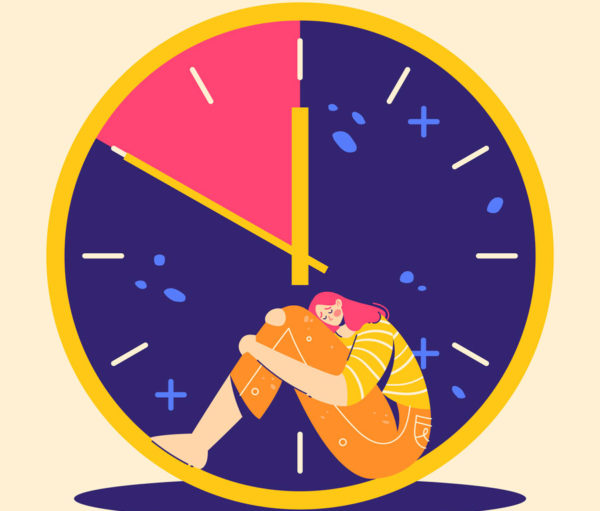Does the End of Daylight Saving Time Make You SAD?

Daylight saving time ends on November 1 this year. Experts often choose this date to call attention to seasonal affective disorder (SAD), a type of depression that comes and goes with the seasons. While some people experience SAD during the summer months, it is much more common during late fall and the winter months when we have reduced exposure to sunlight.
According to the National Institute of Mental Health (NIMH), the most typical symptoms of winter pattern SAD are:
- Feeling depressed most of the day, nearly every day
- Feelings of hopelessness or worthlessness
- Low energy and loss of interest in things we normally enjoy
- Daytime sleepiness, sleeping more than usual
- Overeating, weight gain and a craving for carbohydrates
- Difficulty concentrating
- Social withdrawal—the urge to “hibernate”
- Thoughts of dying or suicide
The causes of SAD are not fully understood. Experts think reduced sunlight may play havoc with our internal clock that regulates sleep, waking and appetite. Levels of chemicals in the brain and hormones also are involved. Risk factors include being female, a family history of SAD, and living in areas that are darker in the winter. Not surprisingly, the NIMH reports that almost 10% of people who live in New England and Alaska suffer from SAD, compared to only 1% of Floridians.
Indeed, SAD expert Kelly Rohan, PhD, told the American Psychological Association, “Most people experience SAD symptoms to a certain extent, especially at higher latitudes.” Rohan said mild cases are common—a disorder often called “the winter blues.”
SAD in the Year of COVID
According to the Centers for Disease Control and Prevention (CDC), the rate of depression has already tripled this year, and the colder, darker days are likely to make things worse. Experts are warning that winter-pattern SAD symptoms could be much more pronounced this year, and diagnosis might be trickier, as many of the factors implicated in every form of depression are so much in the forefront. Those include:
Dealing with illness. Heart disease, vision loss, mobility problems, chronic pain, and even the normal brain changes associated with aging raise the risk of depression—and this year, millions of people have dealt with symptoms of COVID-19, sometimes severe and long-lasting.
Loss or severe illness of a spouse or other loved one. Grief can lead to depression—and this year many families have dealt with the loss of a person to COVID-19. Many others are facing challenges as a loved one struggles with the long-term effects of the disease.
Social isolation. Spending time with others is an important way to ward off depression—but when in our lives has that been harder? To protect against the virus, most people are spending much less time with others. People who can do so are working from home, while essential workers often confine their social interactions to work. Senior living communities are striving to strike a balance between protecting residents from infection and helping them stay active and engaged. It is an unprecedented challenge!
It’s important to seek treatment for SAD. An accurate diagnosis is the first step, because the treatment for SAD is different than for other types of depression. The doctor may recommend:
Medications. Certain drugs are used to treat SAD. Some are not recommended for older adults. It is often a trial and error process as the doctor determines which medication is the most effective for an individual patient. Medical practices are taking precautions to keep patients safe at this time, and may offer televisits.
Light therapy. According to the NIMH, “The idea behind light therapy is to replace the diminished sunshine of the fall and winter months using daily exposure to bright, artificial light. Symptoms of SAD may be relieved by sitting in front of a light box first thing in the morning, on a daily basis from the early fall until spring.”
Psychotherapy. The NIMH says that cognitive behavioral therapy is often effective, including a technique called behavior activation which “seeks to help the person identify activities that are engaging and pleasurable, whether indoors or outdoors, to improve coping with winter.” These days, many therapists are meeting with patients online.
Other treatments, such as vitamin D supplementation, are under investigation. Lifestyle changes also can help, whether the diagnosis is SAD or another type of depression. Make the effort to get plenty of exercise, eat well, and connect with others—even as all those activities are looking quite different this year. If you suspect a loved one is suffering from depression, talk to them about it, and discuss ways they can get help.
The information in this article is not intended to replace the advice of your healthcare provider. If you are experiencing feelings of depression, talk to your doctor.
Source: IlluminAge

